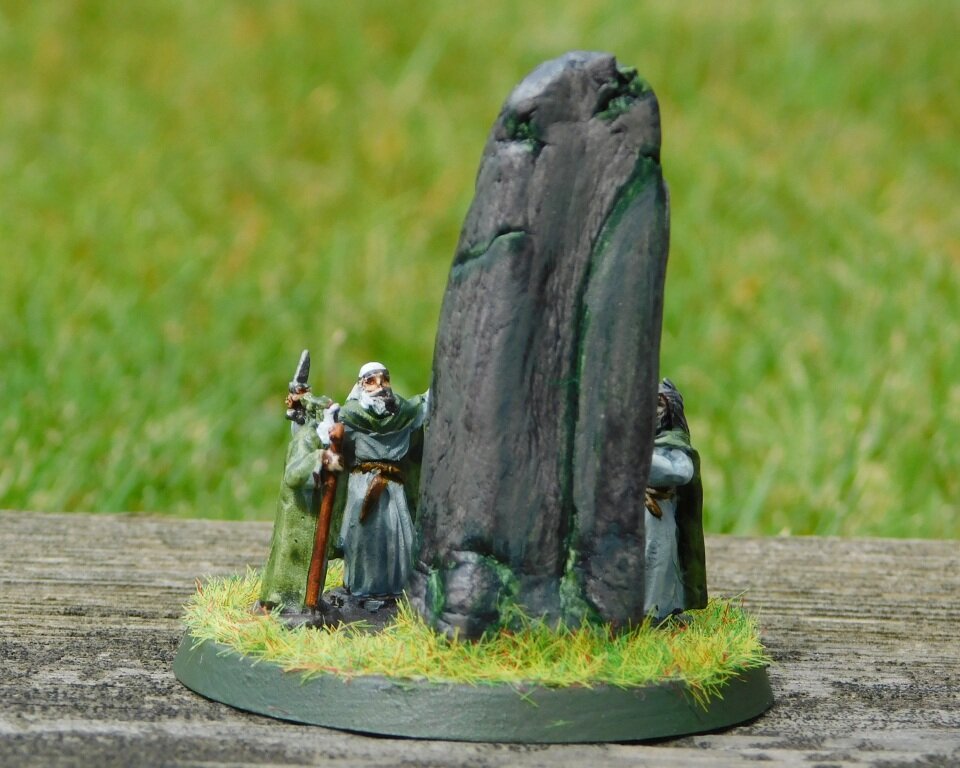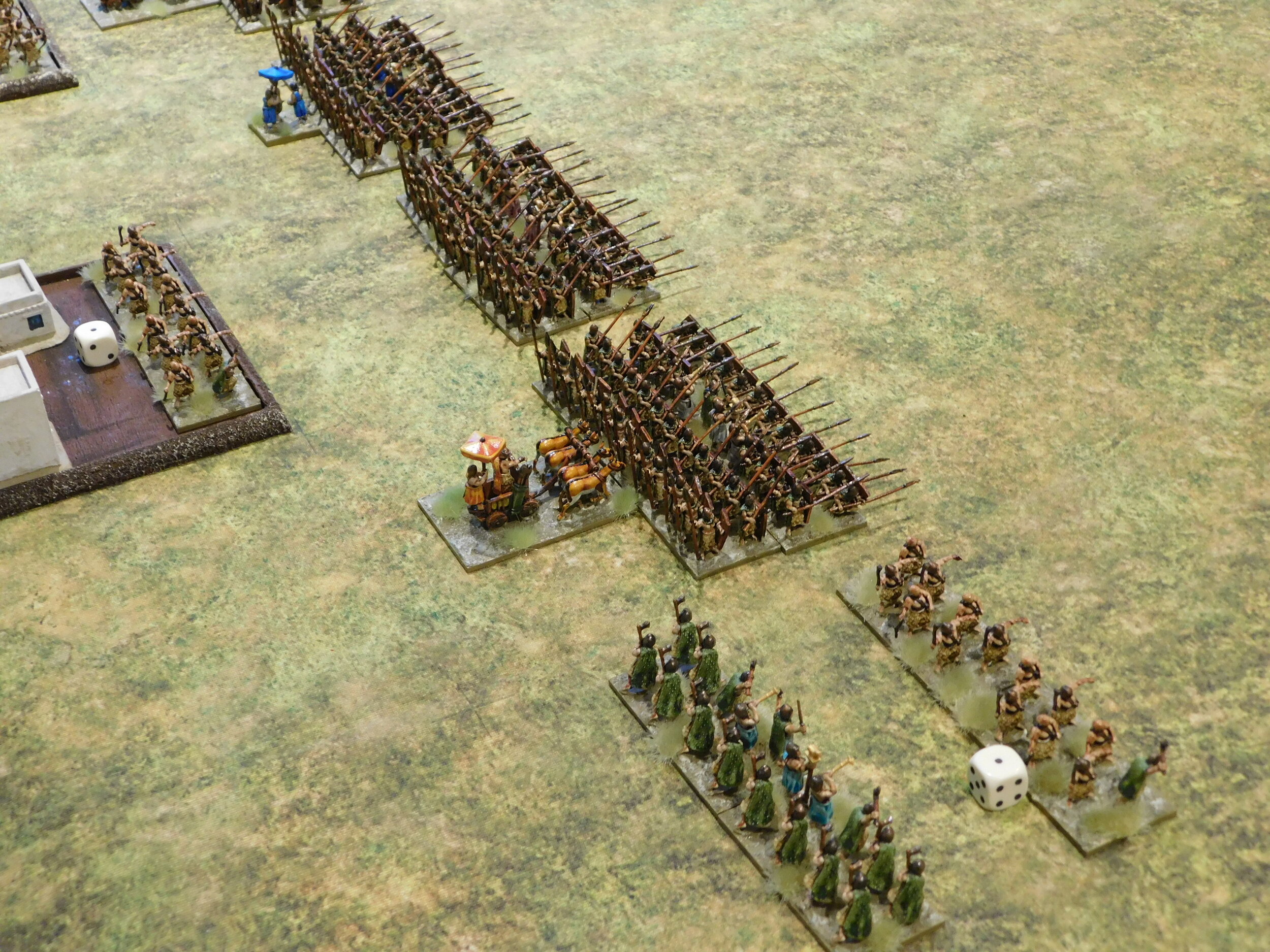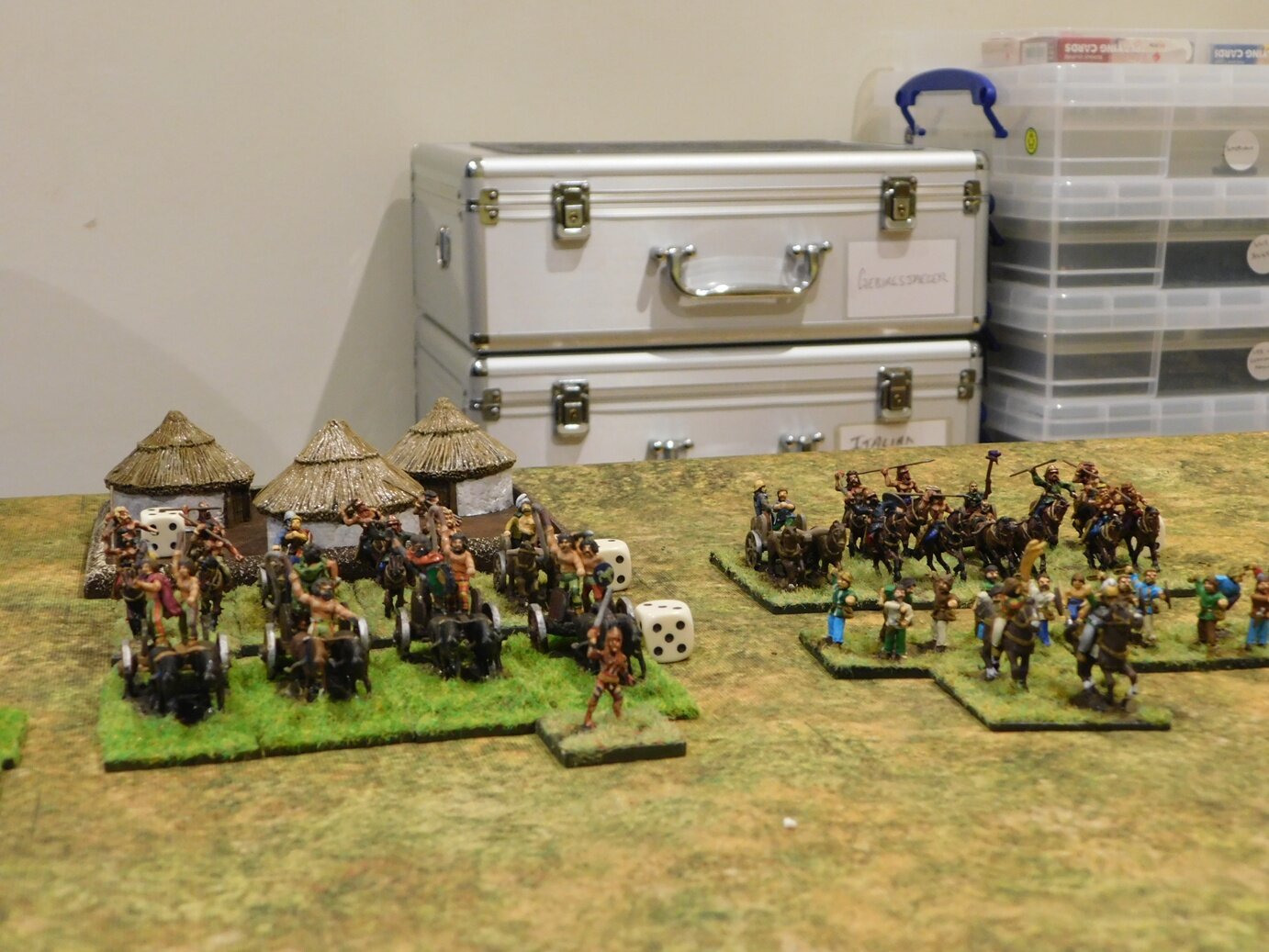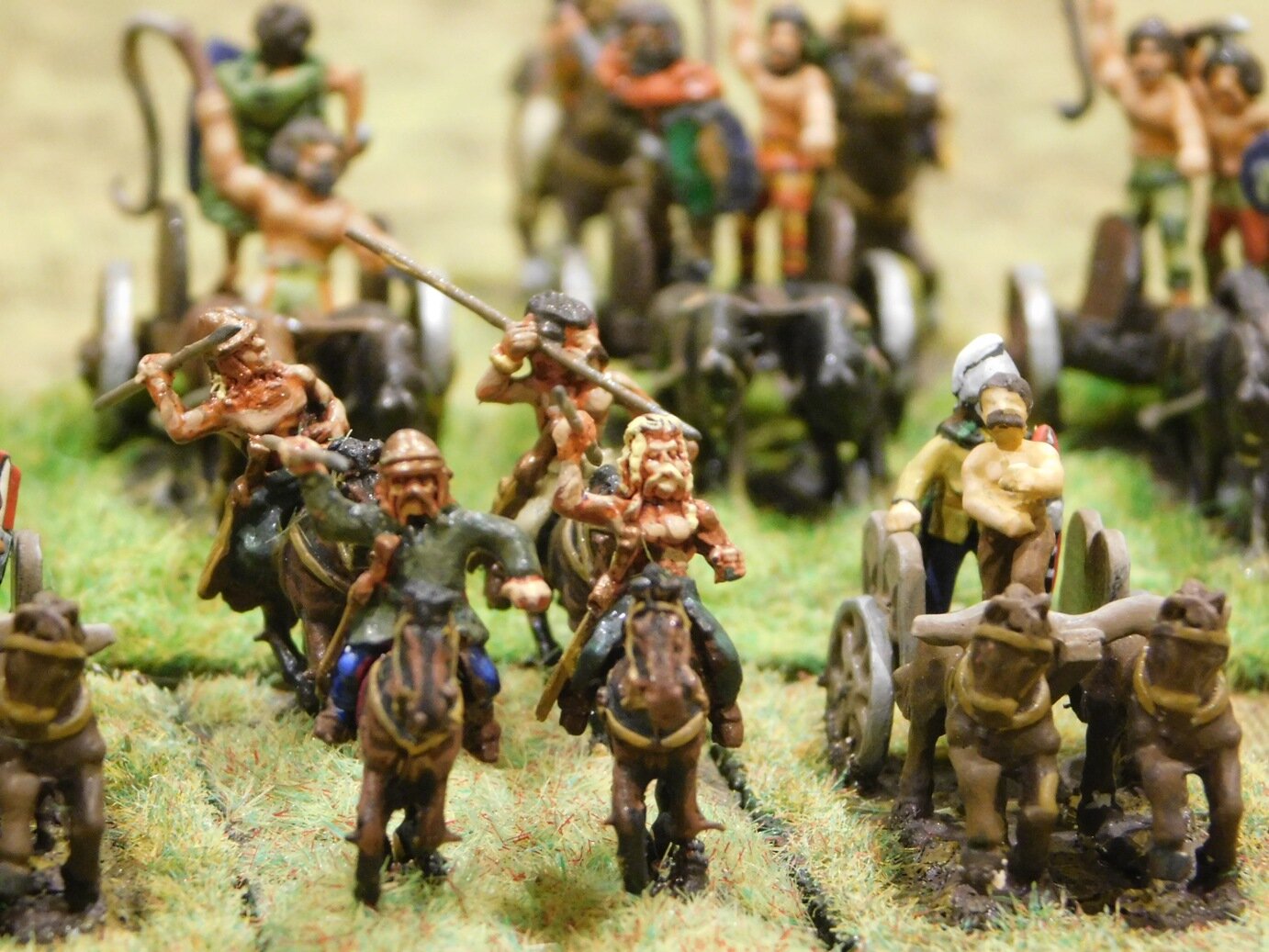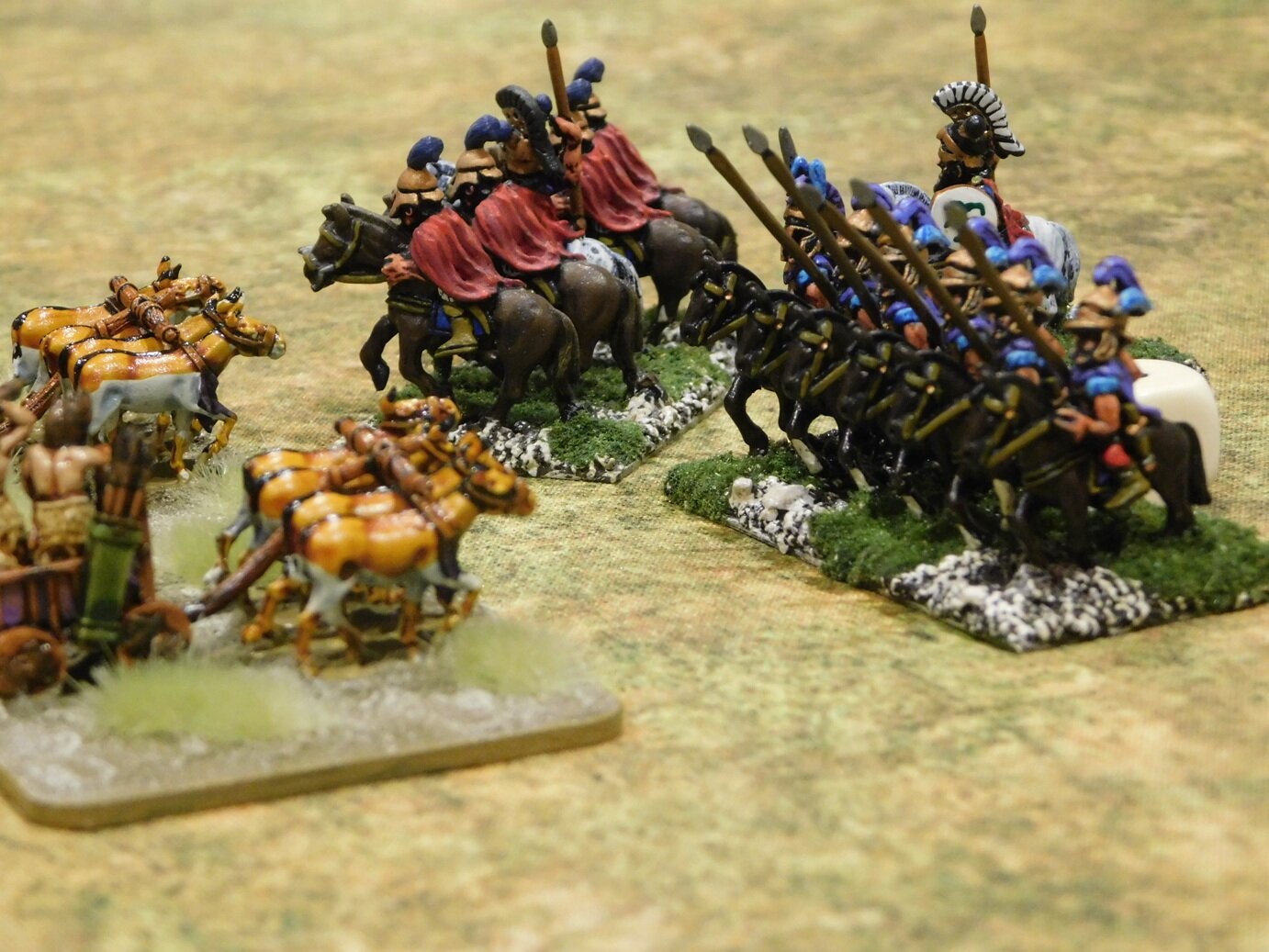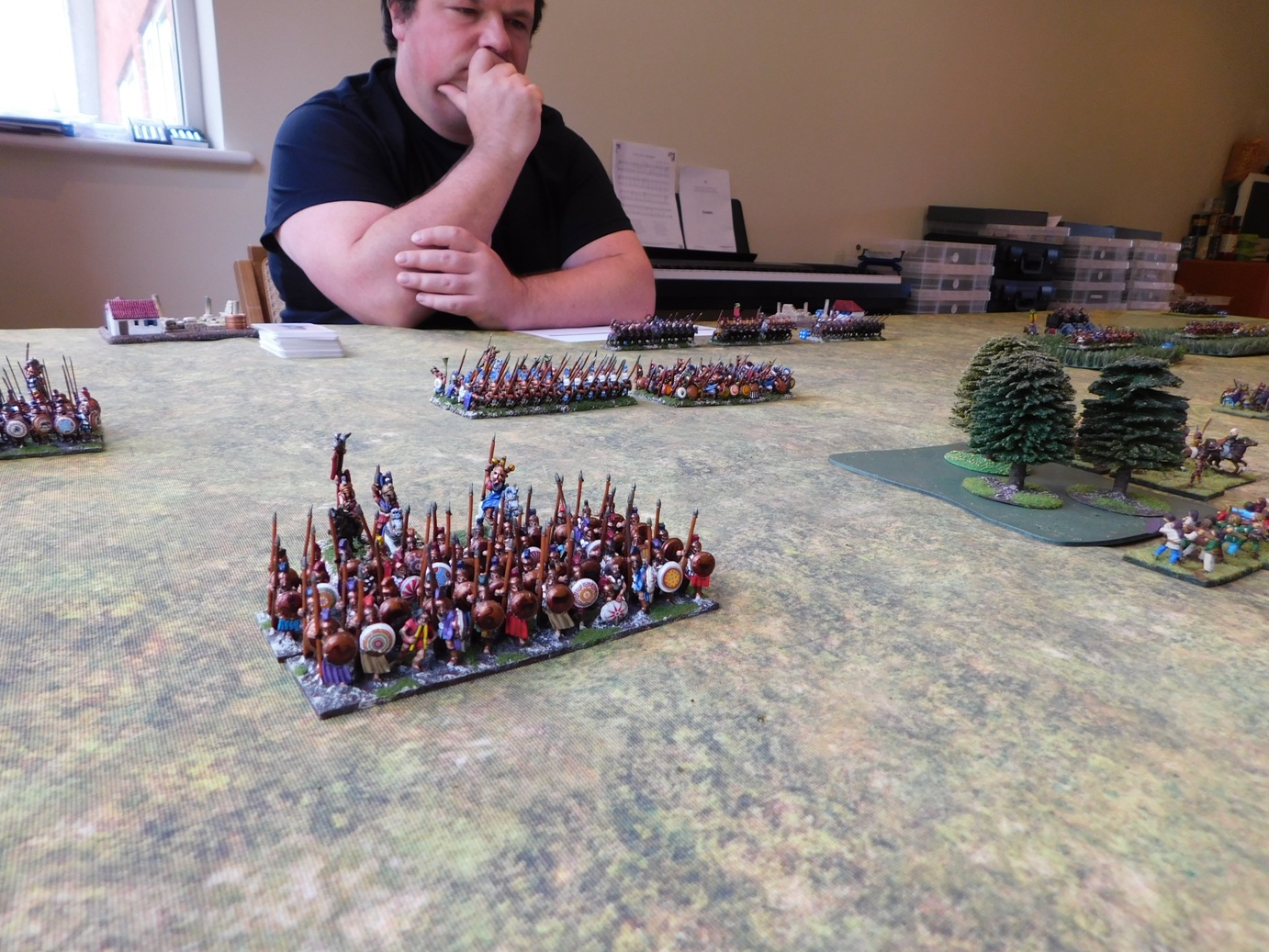A bit of Miscellaneous Painting
/Always good to add some character units to your rank and file, so when I saw that the 3D printed March to Hell range of Celts included war dogs and a handler, I knew I had to get one to act as one of the many "Heros” accompanying my Ancient Brits.
A nice little piece that paints up very easily indeed. The hounds were a single coat of Contrast Basilicum Grey over undercoat; the handler was painted as a normal Celt: dark blue tunic with light blue stripes.
Next are a couple of extras for my Venetians.
My Spearmen don’t seem to be achieving much, so here’s a unit of Alabadiers or Billmen who, hopefully, will fare a bit better.
The Alabardiers are made from the heads and bodies of spare normal infantry combined with the arms and weapons of spare knights, which is why they all look a bit top heavy!
It also got a bit crowded on the base…which is why, in the back rank, one of them is smashing the back end of his axe into the face of another! I should perhaps have dropped a figure from each line or at least spaced them out properly.
Finally, a unit of light crossbowmen and an infantryman carrying a flag that I can use either as an army standard or to mark where a dismounted general is or the like.






















